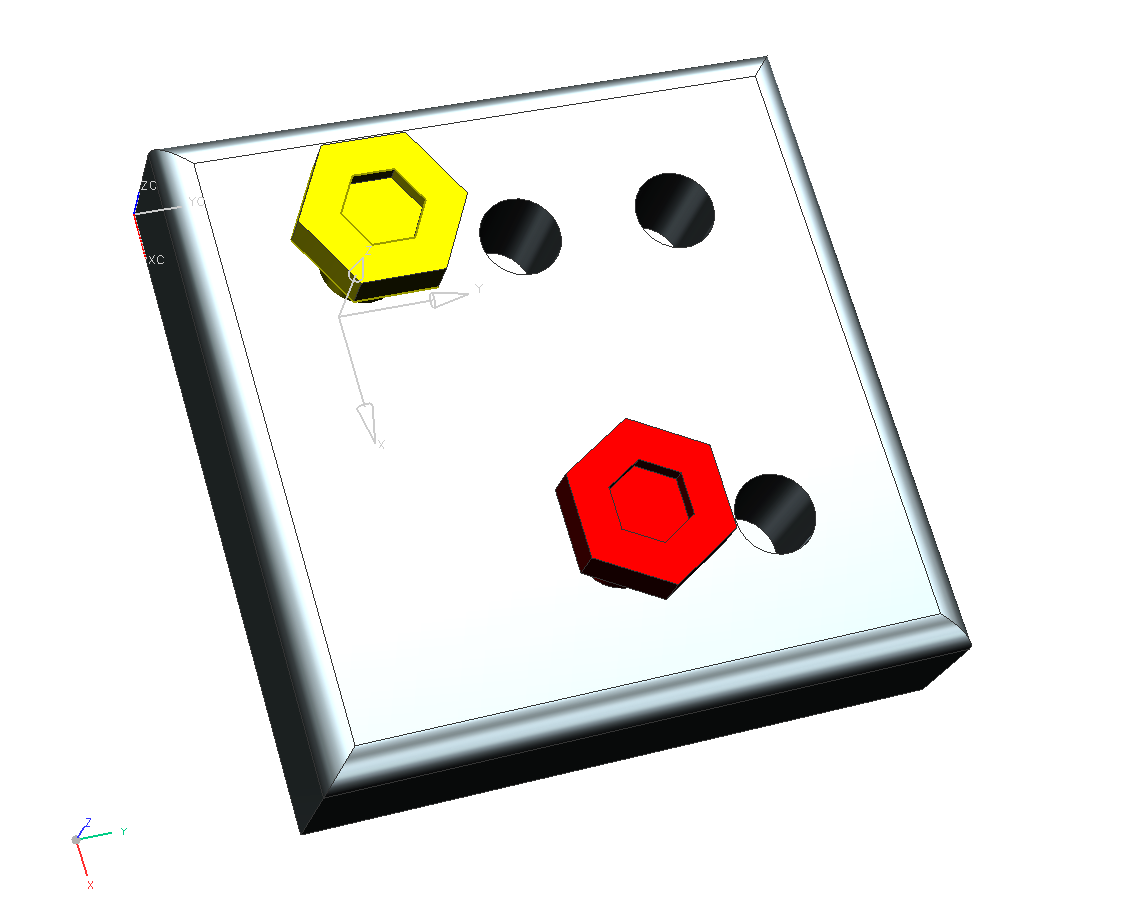A model in a room basically has six degrees of freedom:
- Translation in X, Y, Z direction
- Rotation around X, Y, Z-axis
These degrees of freedom define the movement possibilities of the model.
If a model is to be installed, its degrees of freedom must be restricted. With so-called assembly constraints, the components are referenced to each other and thus clearly defined.
Since the components are only related to each other, the first part of the assembly has to be positioned in space by coordinates. This is called absolute positioning. Usually this is done in the origin of the absolute coordinate system, in the point (0|0|0).
The use of usefull topologies is important when creating assemblies. Components should be positioned relative to each other so that the arrangement corresponds to the subsequent function and small changes to individual parts do not require a recreation of the entire assembly.
The following example illustrates the problem.
A square case cover should be screwed to the corners with four identical standard screws. First, the screws are installed as prefabricated parts (see figure "plate"). The yellow screw is positioned by entering the distances to the side walls, while the red screw is directly referenced to the borehole. If the positioning of the boreholes is changed, the yellow screw will not be moved so that it is outside the borehole. It is therefore much more sensible to reference the screws to their hole (red screw) (See figure "Plate - Positioning of holes changed").
This very simple example shows you the effects that referencing errors can have. For this reason, the subsequent function must always be taken into account when working on an assembly and thus be referenced accordingly.

